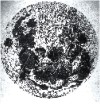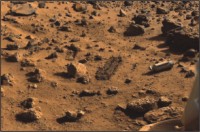SCIENCE SNIPPETS
Galileo's lost lunar sketches
 Galileo's forgotten watercolours of the moon showing lunar mountains and craters have been found after four hundred years, much to the surprise of scientists. The five lost paintings were unexpectedly discovered by historians in Galileo's own personal copy of Sidereus Nuncius (The Starry Wanderer), in which he presented his important discovery that the moon was not a smooth sphere but had an uneven surface just like the earth. Printed in Venice in 1610, the book was central to his argument that the earth revolved round the sun, which led to a dispute with the Vatican and his eventual imprisonment. Other known copies of the book contain engravings rather than paintings of the moon. Galileo's forgotten watercolours of the moon showing lunar mountains and craters have been found after four hundred years, much to the surprise of scientists. The five lost paintings were unexpectedly discovered by historians in Galileo's own personal copy of Sidereus Nuncius (The Starry Wanderer), in which he presented his important discovery that the moon was not a smooth sphere but had an uneven surface just like the earth. Printed in Venice in 1610, the book was central to his argument that the earth revolved round the sun, which led to a dispute with the Vatican and his eventual imprisonment. Other known copies of the book contain engravings rather than paintings of the moon.
 The red planet gets hotter The red planet gets hotter
Mars is heating up. Comparing maps of the red planet's 'albedo' (the amount of light reflected off the surface) scientists believe the temperature has risen some 0.65C since the 1970s. The reason for this warming appears to be the greater exposure of dark rock -- that absorbs more sunlight -- on the surface of the planet, which in turn has been caused by increasing dust storms. There is debate as to whether the Martian polar ice caps could disappear altogether over the next centuries. While earth is also experiencing global warming, the two planets and their weather systems are fundamentally different.
 Could football cause motor neurone disease? Could football cause motor neurone disease?
British neuroscientists are asking if there could possibly be a link between football and motor neurone disease (MND) after finding three players on the same football team who developed the degenerative nerve disease, which normally only affects one in 50,000 annually. In Italy, it has also been noted that professional footballers were six times more likely to contract the fatal disease. Further studies could reveal whether repeated heading of the ball might be a factor leading to MND. However, motor neurones are found deep within the structure of the brain and spinal cord and for now scientists are puzzled.
-Forum Desk |

